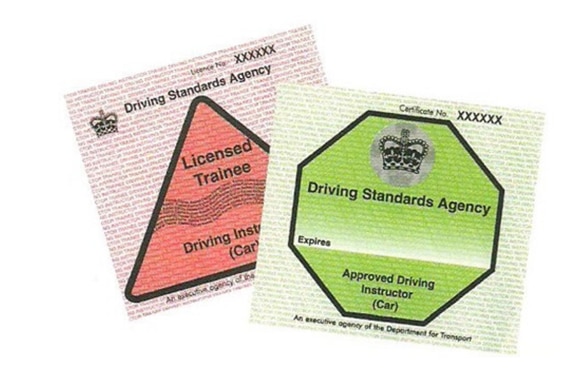
1. How can you prepare your car for driving in all weather conditions?
To drive safely in all weather conditions, your car must be equipped with the necessary tools. Before setting off, check that your vehicle has a scraper and de-icer for frosty mornings, snow chains for snowy roads in extreme conditions, and that its brakes, tyres, lights and wipers are in good condition. Always plan ahead by checking the weather forecast before heading out on a journey so you can avoid driving during extreme weather conditions if possible. Remember to adjust your driving style according to the current weather conditions and maintain a safe distance from other vehicles on the road. Use headlights appropriately and avoid sudden movements like harsh braking or accelerating too quickly which could cause skidding especially in slippery surfaces like ice and snow-covered roads. With these precautions in place, you’ll be better prepared to handle any weather condition on the road.
2. What are the essential items to keep in your car during bad weather?
Ensure your car is equipped with essential items to handle bad weather. A scraper and de-icer are crucial for frosty mornings, while snow chains can provide traction on snowy roads. Check that your vehicle is roadworthy by examining its brakes, tyres, lights and wipers before setting off on any journey. Keep a blanket, water, snacks and a charged phone in case of emergencies. A torch, first aid kit and warning triangle can also be useful. Additionally, carry sunglasses to reduce glare during sunny spells and a high-visibility vest in case of breakdowns. Be prepared for any eventuality by packing these items in your vehicle before embarking on any journey.
3. How do different weather conditions affect driving and what precautions should you take?
Different weather conditions can greatly impact driving safety. Rain, snow, fog and wind all require different precautions to be taken. In rainy conditions, it’s important to slow down and increase the distance between vehicles. Snowy roads require winter tires and slower speeds. Foggy conditions can reduce visibility drastically, so it’s important to use headlights and fog lights appropriately. Windy conditions can make steering difficult, especially for high-sided vehicles. Always be aware of the weather forecast before heading out on a journey and plan accordingly. Keep your vehicle maintained and equipped with necessary tools such as a scraper and de-icer for frosty mornings or snow chains for snowy roads. By taking these precautions, you can ensure a safe driving experience in any kind of weather condition.
4. What techniques can be used to drive safely on wet roads?
When driving on wet roads, adjust your speed and increase the distance between vehicles to prevent aquaplaning/hydroplaning. Use headlights appropriately and avoid sudden movements like harsh braking or accelerating too quickly. Smoothly steer into skids and slides while easing off the accelerator pedal slowly but steadily until regaining control of the vehicle. Keep a safe distance from other vehicles on the road, especially in wet conditions where stopping distances are increased. Make check your mirrors regularly and use air conditioning system wisely. Avoid using cruise control and turn off radio/music player while driving to stay focused on the road. Remember to maintain proper speed limit, check windscreen washer fluid level, and understand how ABS works. Get professional training from Smart Drive UK for more advanced techniques to drive safely in all weather conditions.
5. How can foggy conditions impact visibility while driving, and how do you stay safe in these situations?
Foggy conditions can greatly affect visibility while driving, making it difficult to see other vehicles or obstacles on the road. To stay safe in these situations, reduce your speed and use your headlights appropriately, switching them on whenever visibility drops below 100 meters due to fog. Avoid using high beams as they can reflect back and reduce visibility further. Keep a safe distance from other vehicles, and if necessary, pull over to a safe spot until the fog clears. It’s also important to keep your windows clean and free of condensation to improve visibility. At Smart Drive UK, we offer specialized training programs designed to help you navigate through adverse weather conditions like fog with confidence and safety in mind.
6. What steps should you take when driving on icy or snowy roads, and how do winter tyres help with this?
Driving on icy or snowy roads can be extremely dangerous. When driving in these conditions, it’s important to take extra precautions to ensure your safety. First and foremost, reduce your speed and increase the distance between you and other vehicles. Use gentle movements when braking or accelerating to avoid skidding. Winter tyres are also essential for driving in these conditions as they provide better traction and grip on icy or snowy roads. They are designed with deeper treads and softer rubber compounds that allow them to maintain their flexibility even in cold temperatures. Remember, when driving in icy or snowy conditions, safety should always be your top priority.
7. Can strong winds affect your ability to drive, and what measures should be taken to ensure safety during windy conditions?
Strong winds can significantly impact your ability to drive, especially on dual carriageways, motorways or open roads. The wind can cause your vehicle to sway, which can be dangerous if you are not prepared. To stay safe during windy conditions, reduce your speed and maintain a firm grip on the steering wheel. Keep a safe distance from other vehicles and be extra cautious when passing large trucks or buses. If you feel uncomfortable driving in strong winds, pull over and wait for the weather to improve. Be mindful of fallen debris on the road. Remember that safety is always a top priority when driving in adverse weather conditions.
8. When is it best not to drive at all due to extreme weather conditions?
In extreme weather conditions, it’s best not to drive at all. Heavy rain, snow, ice, and strong winds can make driving hazardous and increase the risk of accidents. If you don’t need to travel, it’s best to stay at home until the weather improves. However, if you must travel, plan your journey in advance and check the weather forecast before setting out. Avoid driving during peak hours or rush hour where possible, and always take extra precautions such as slowing down and keeping a safe distance from other vehicles on the road. Remember that it’s better to be safe than sorry when it comes to extreme weather conditions. Stay informed and exercise caution at all times.
9. How can professional instruction from Smart Drive UK improve your confidence and skills for driving in any type of weather condition?
Smart Drive UK’s professional instruction can enhance your driving skills and confidence in any weather condition. Our expert trainers provide personalized training programs designed to help you navigate the challenges of driving in adverse weather. With our hands-on approach, you’ll learn how to adapt your driving style to different weather conditions, adjust your vehicle accordingly, and handle any unexpected situations with ease. Our commitment to maintaining high standards ensures that you receive the attention and support you need to succeed. Whether you’re a beginner or an experienced driver looking to improve your skills, our tailored training programs will help you become a confident and safe driver in any weather condition. Book a lesson with Smart Drive UK today and experience the difference for yourself.



